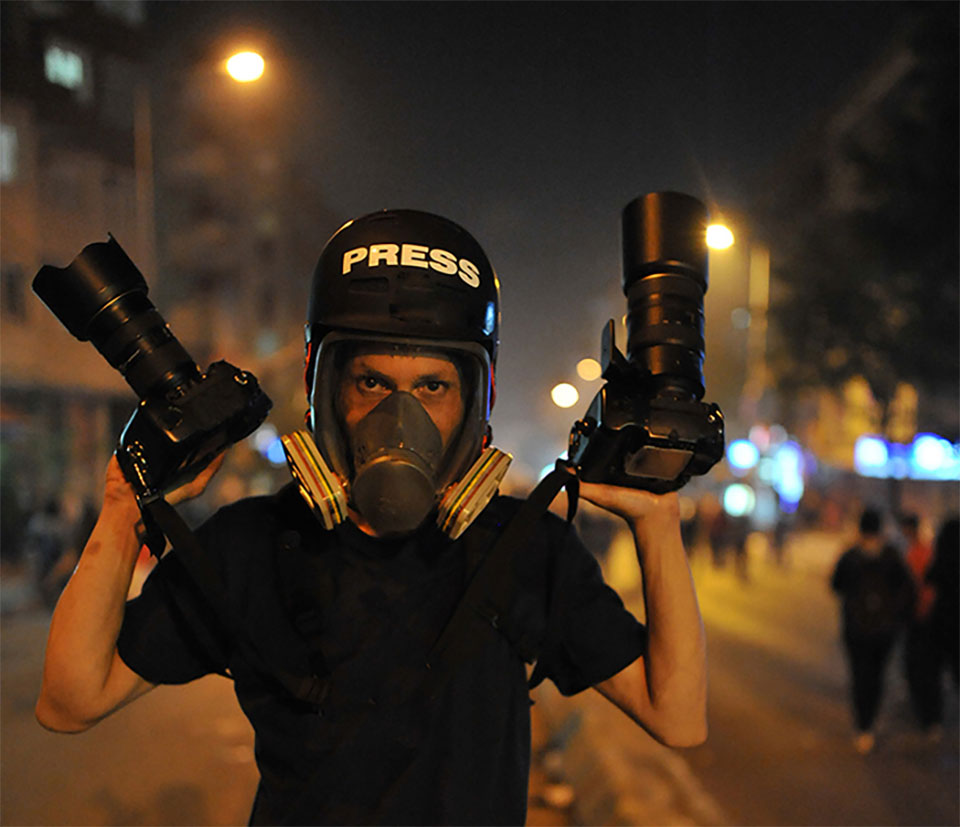In today’s session part of the lesson “Reporting war and crises” of Master’s pathway “Risk communication and crisis journalism” Dimitris Bouras, photojournalist deployed in the field talked about his experience and especially about photography between invisibility and the unseen.
- While we are following our every day schedule someone is dying out of a bullet or dropped in sea.
- Wars doesn’t need to be slushy, can be just a sound.
- We are in the new media terrain.
- War is caused due to the memory.
- Try to trace the roots.
- Focus on the human, not the equipment.
- Need to care about what is happening in other places of the world, out of our normality and convenience.
- Someone is dying while we are continuing our lives.
- Photojournalism is in transition as a profession and remains an unorthodox career for most.
- Transjournalism: stills, motion, audio, text and graphics
In war era, we are working on the process to moving from memory to history. The problem is the memory to look back and understand the cause and role of journalism on this is to find the roots. War is caused due to memory; we look back to understand the cause and underline the issues. Where we have to focus is the human, not the equipment. Equipment are really replaceable and can be deleted. But the loss of a human which can be written in just a single line can’t be deleted. We have wars and we will keep having wars, since we’ve done it our jobs. Somewhere in this planet people could be killed for a lot of reasons as long as we keep our normality. The only thing we do is to seek to see what is happening and then to fall asleep. As long as we keep our normality like nothing happens except from pictures from media war will still exist. The audience is the spectator refusing to look its own mirror and deal with its own devils.
According to Bernard Lewis, Reflections of a Middle East historian “we live in a time when great energies are being devoted to the falsification of history-to flatter, to deceive or to serve some sectional purpose. No good can come of suck distortions, even when they are inspired by unselfish motives. History is the collective memory and if we think of the social body in terms of the human body, no history means amnesia, distorted history means neurosis”.
In our era, it’s harder than ever financially, it’s had to break into the profession and find your place, journalism, financially is in a state of chaos. We have the collapse of the “Advertising Model”, the “death of the Editor”, the “30sec” effect: image caption out and the audience defines “when” and “where” on demand. Also, there is no longer a front page, to hold the public’s attention while journalism has to deal with “the Viral Syndrome” as the disease is infecting journalism.
Transjournalism refers to the use of multiple platforms to tell our story that incorporate stills, motion, audio, text and graphics. People are as curious as they’ve ever been but now, we have the “30 second” effect image caption. In our era, we are all photographers, we have the crowdsourcing technic. From “journalism is as good as the person who transmit” into “journalism is as good as YOUR curiosity”. Success is measured by our ability to balance two priorities to preserve journalism while generating revenues. In other words, to stay ahead we must at once be news mavericks that respond instantly to any crisis, digital visionaries who foresee challenges and opportunities and act pre-emptively to stay ahead of this curve. The most important thing both in past, in present and in the future is TRUST.
“In front of a scene in which we see a human being overwhelmed sometimes losing his dignity, because is subject of abuse, violence or injustice, nine on ten people turn away their sight, because they feel embarrassed or do not want to embarrass the person, one sees and watch and witness with his presence this injustice, leaving indelible mark that send to all the others to help them to be informed and to help them to reflect on what’s happening, that person is a photojournalist”, Dan McGullin.
In photojournalism and especially in war reporting it´s important to know that it´s a matter on how people decide on war reporting and have to understand something more critical that we are just outsiders. We have to understand and respect this position, we are there because something is happening. So, don´t be biased from your personal ideology and political beliefs and avoid empathy. War Photojournalism is easy but most of the photojournalists should know that we are just witness. In war reporting you have to live with the fear, fear is natural and may sometimes protects you.




